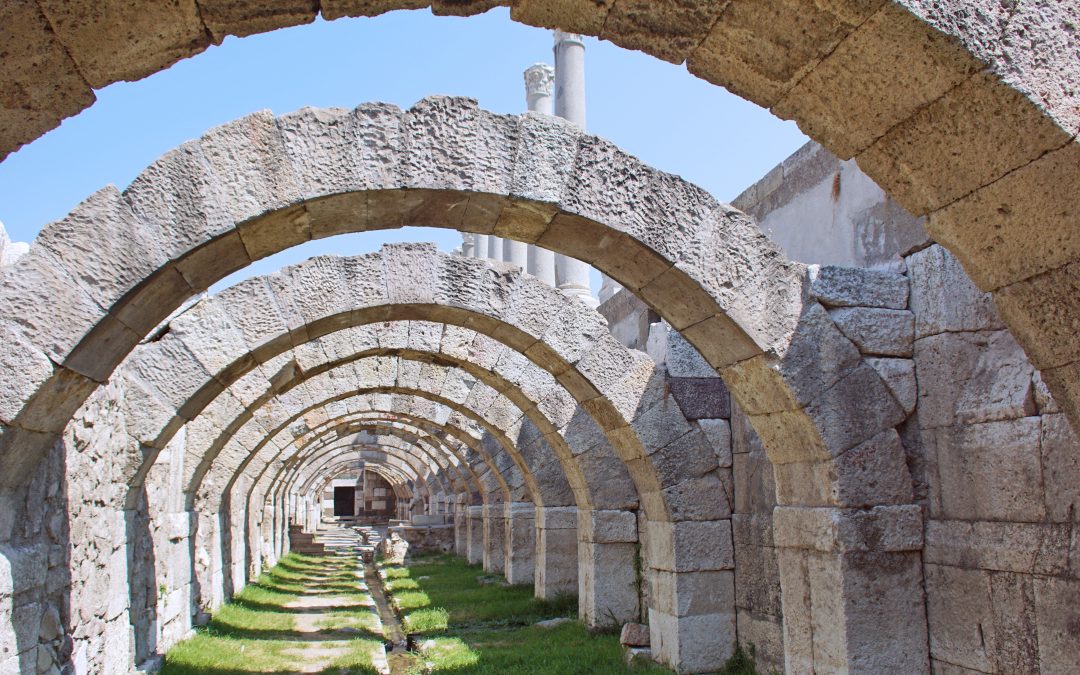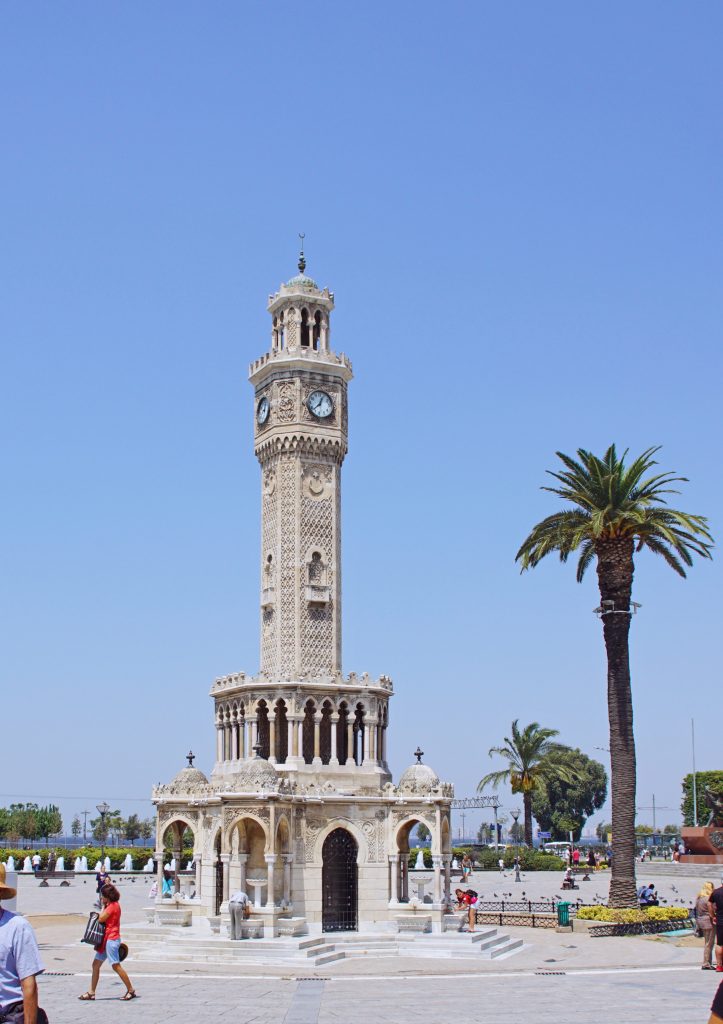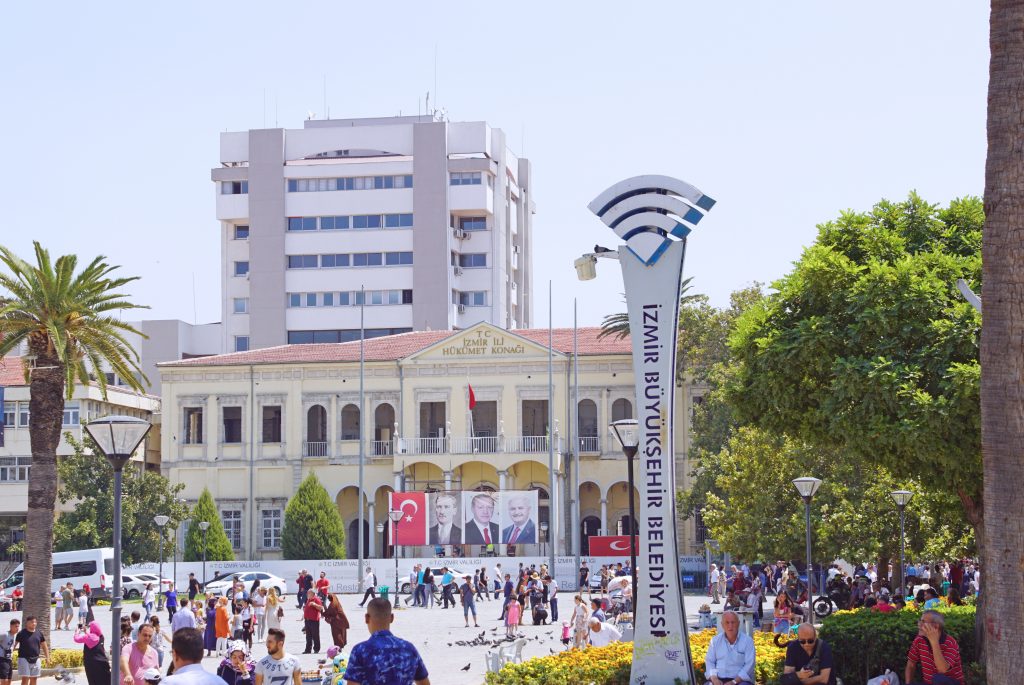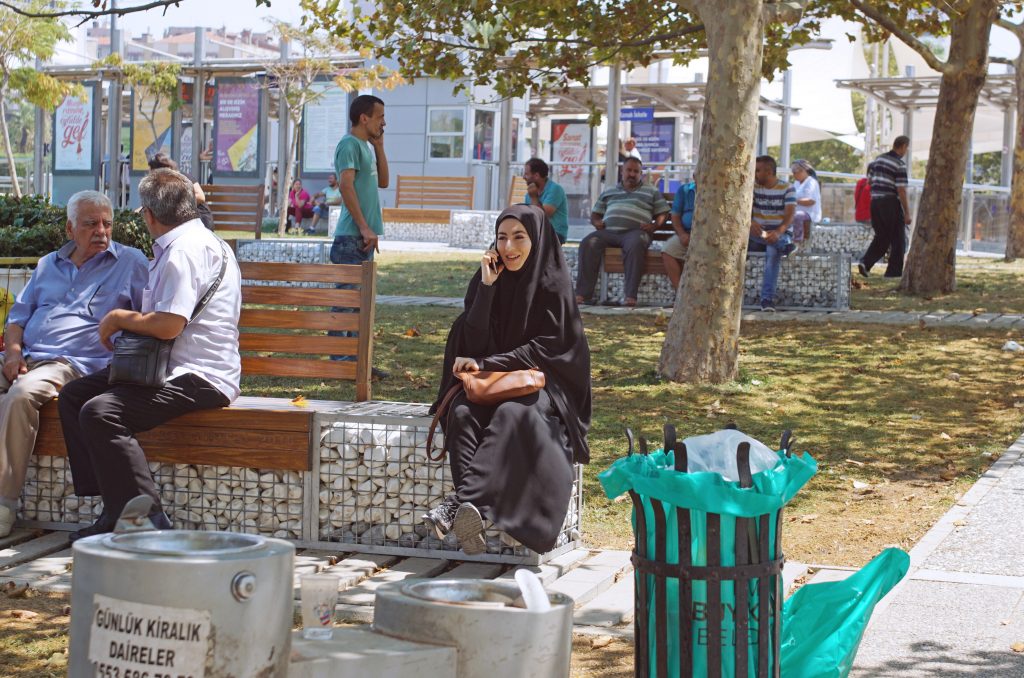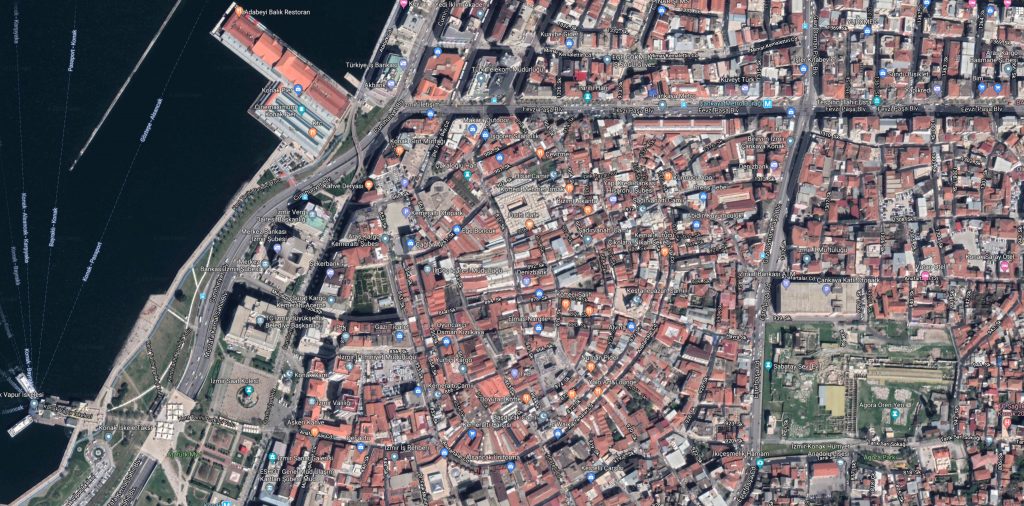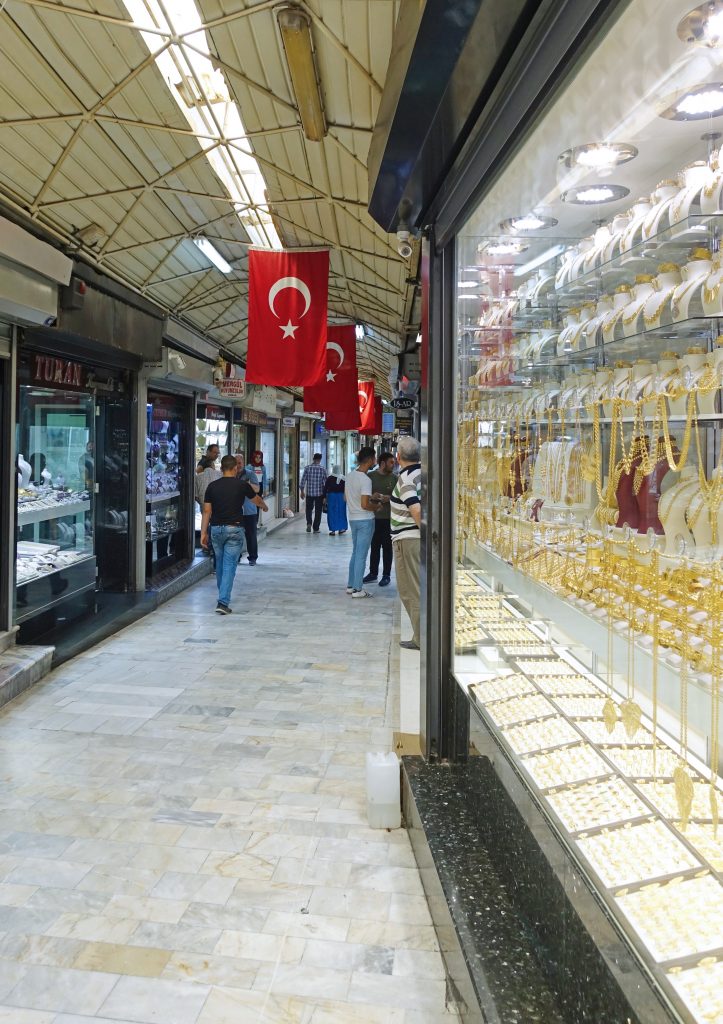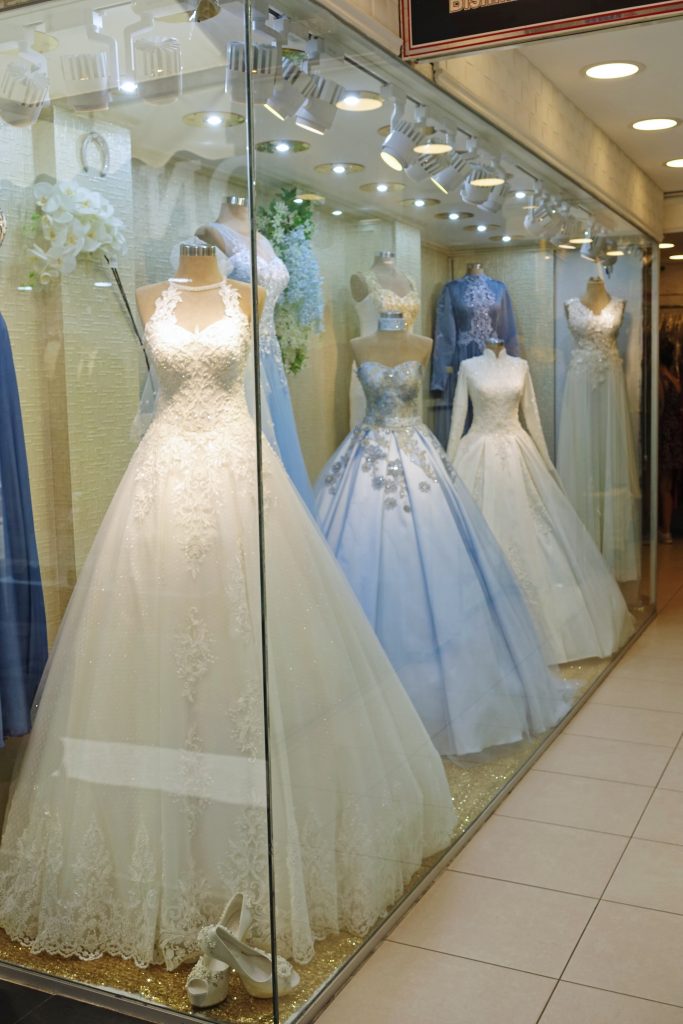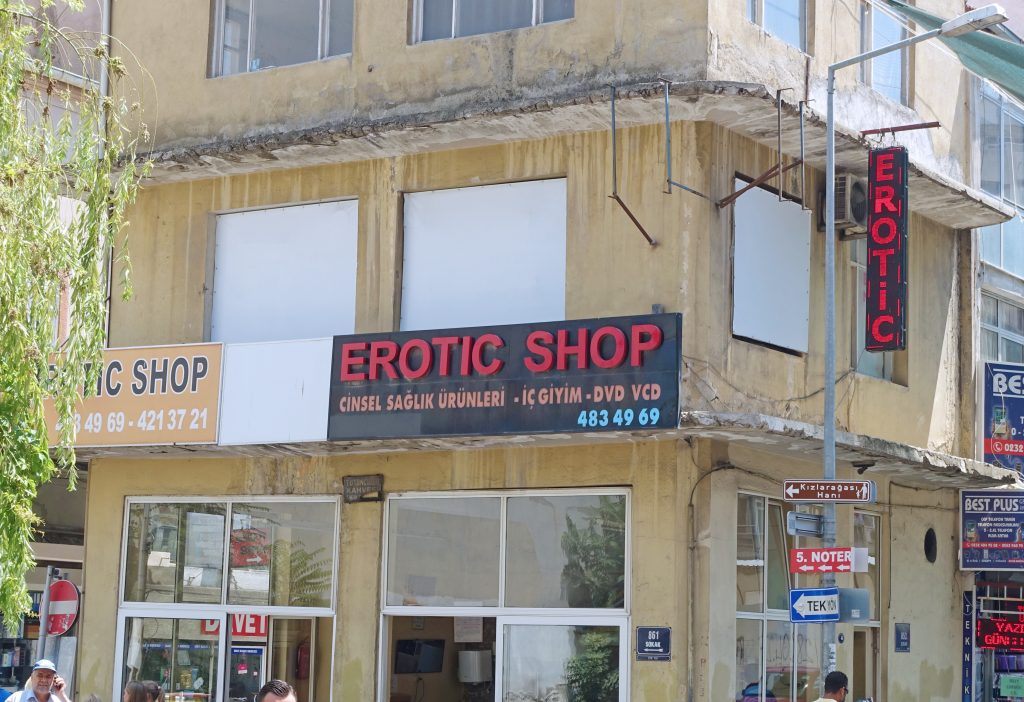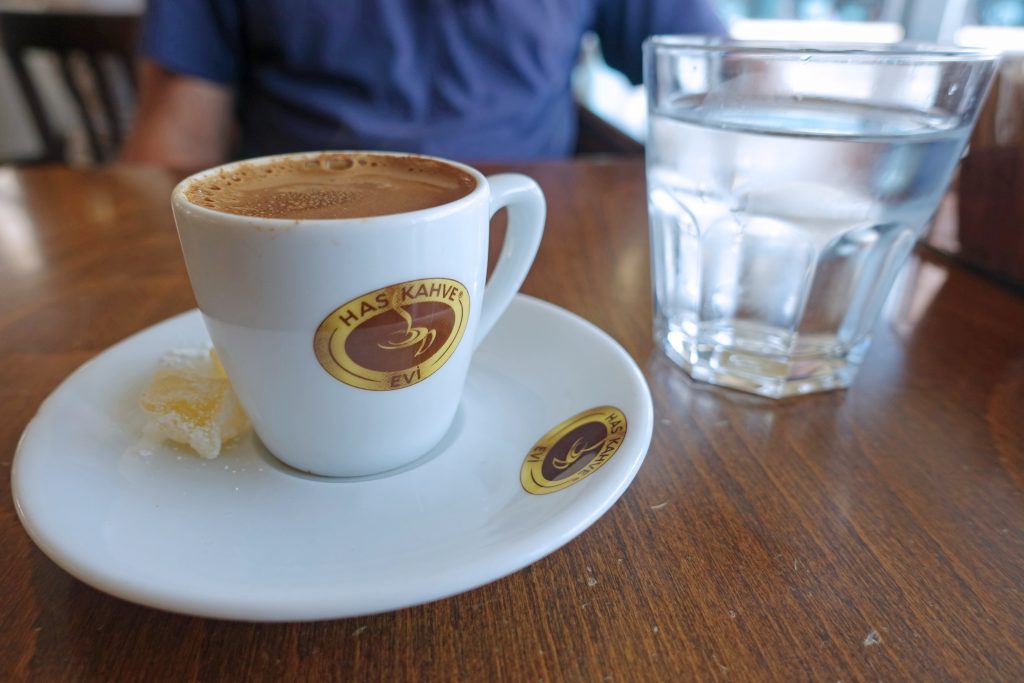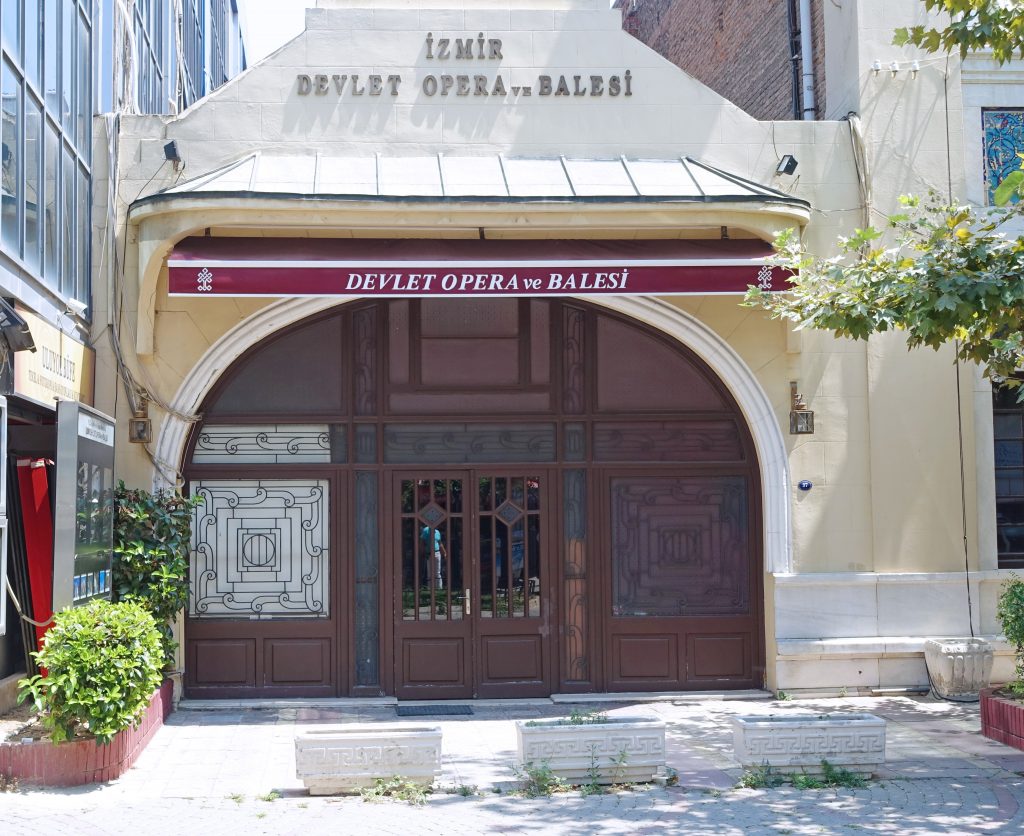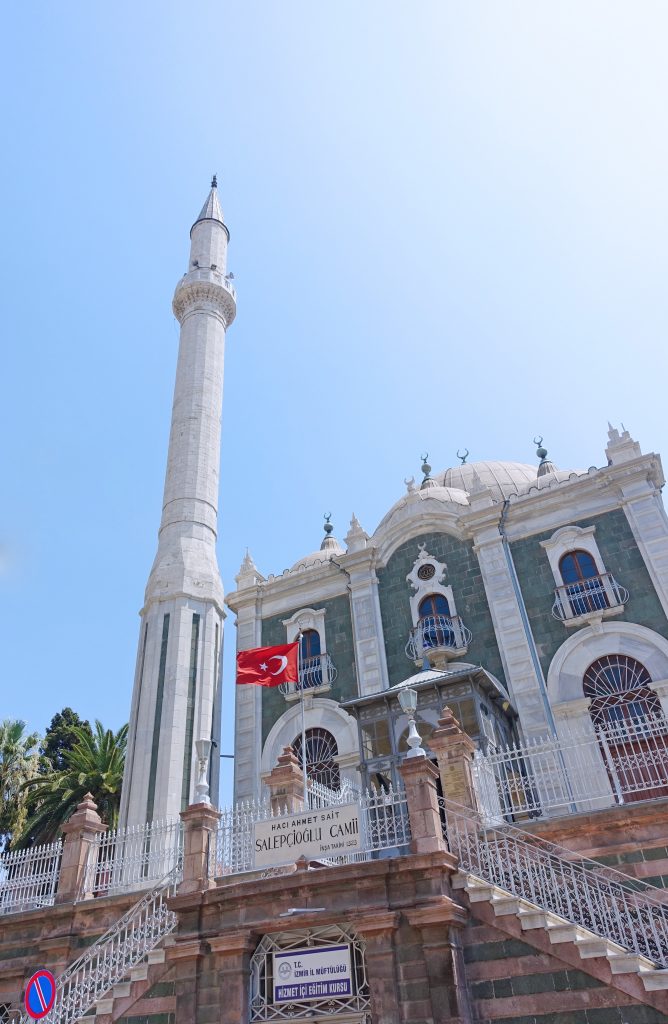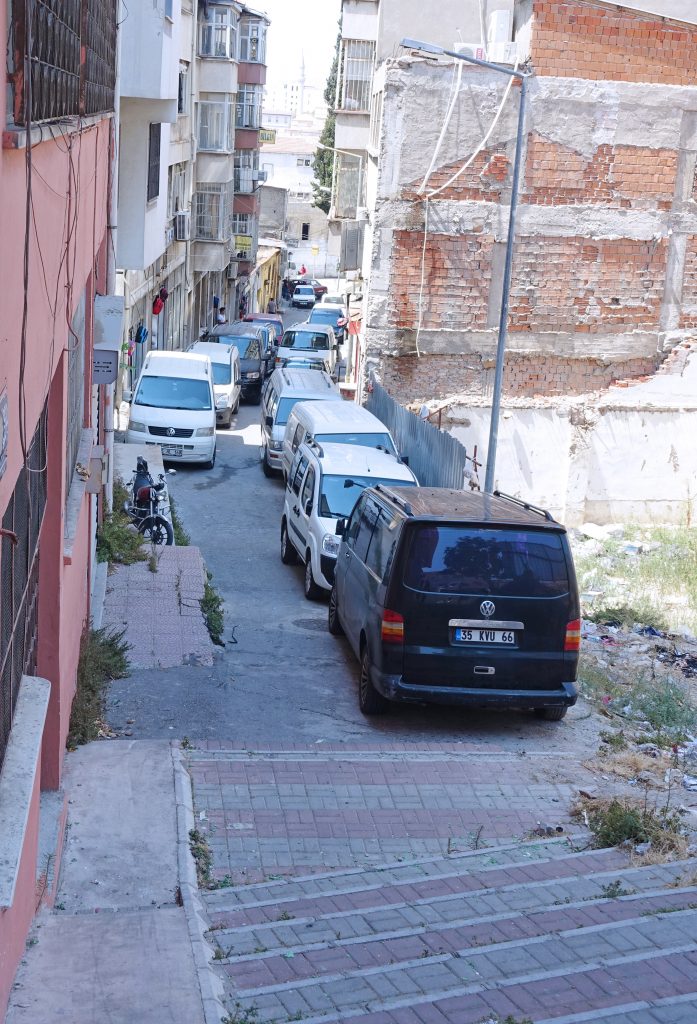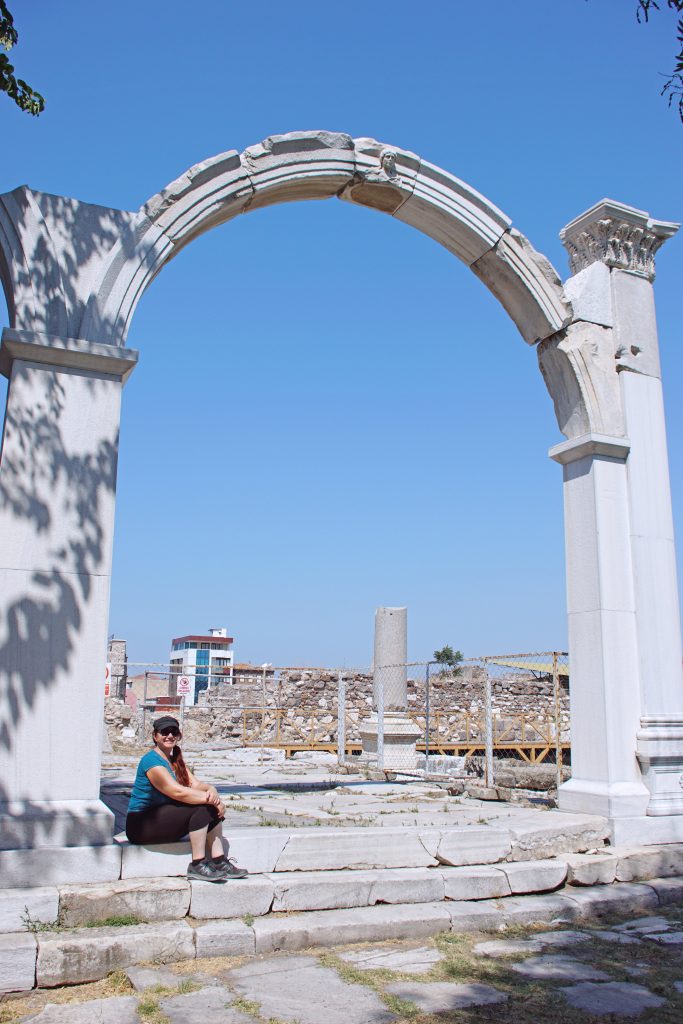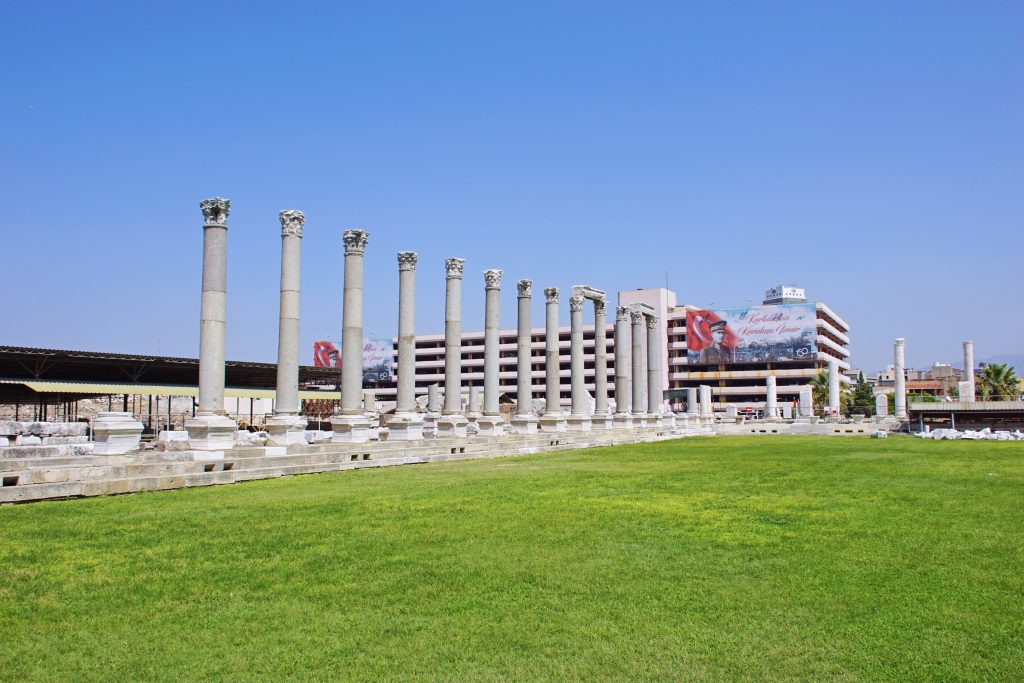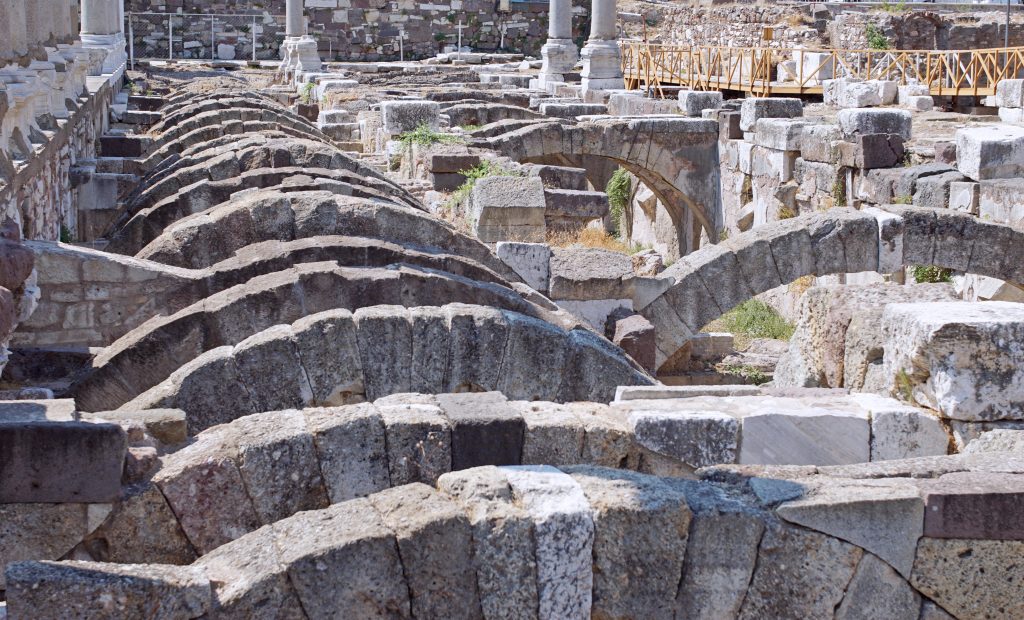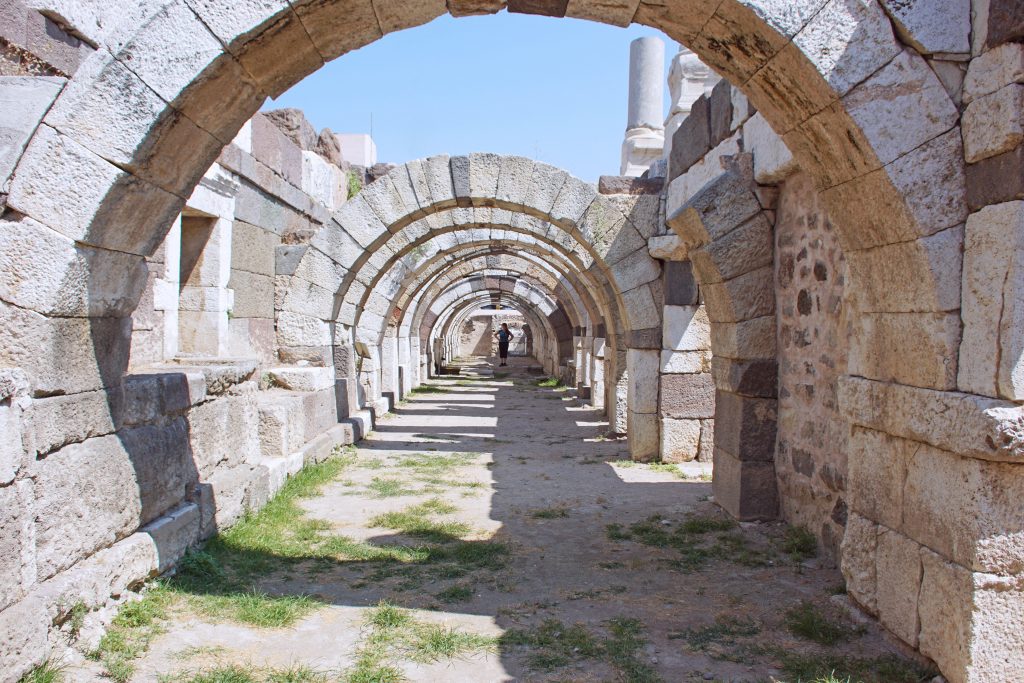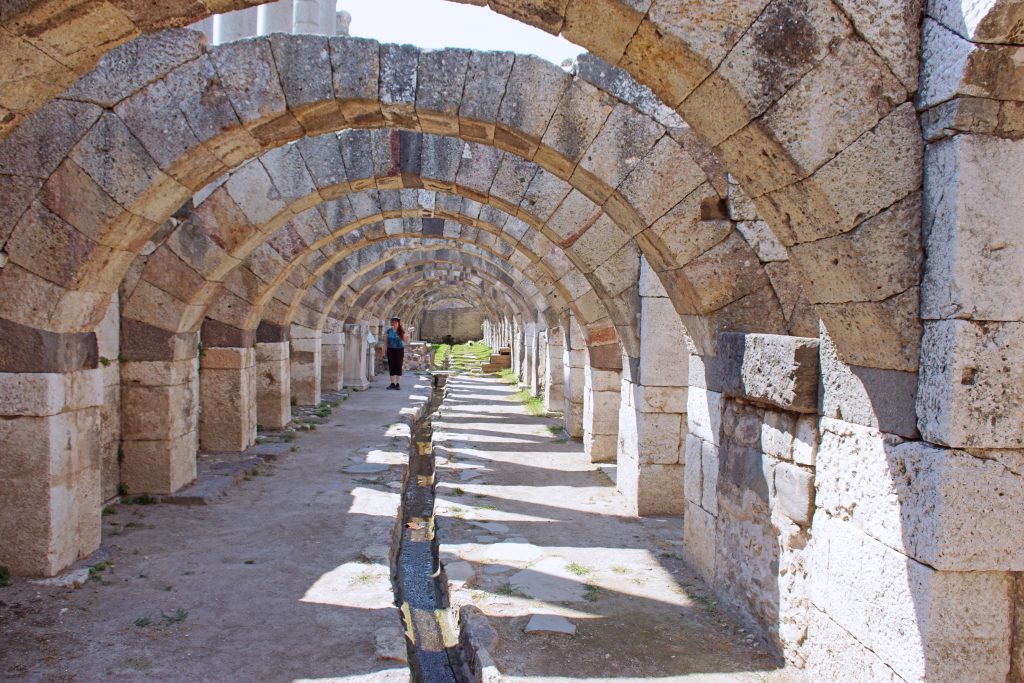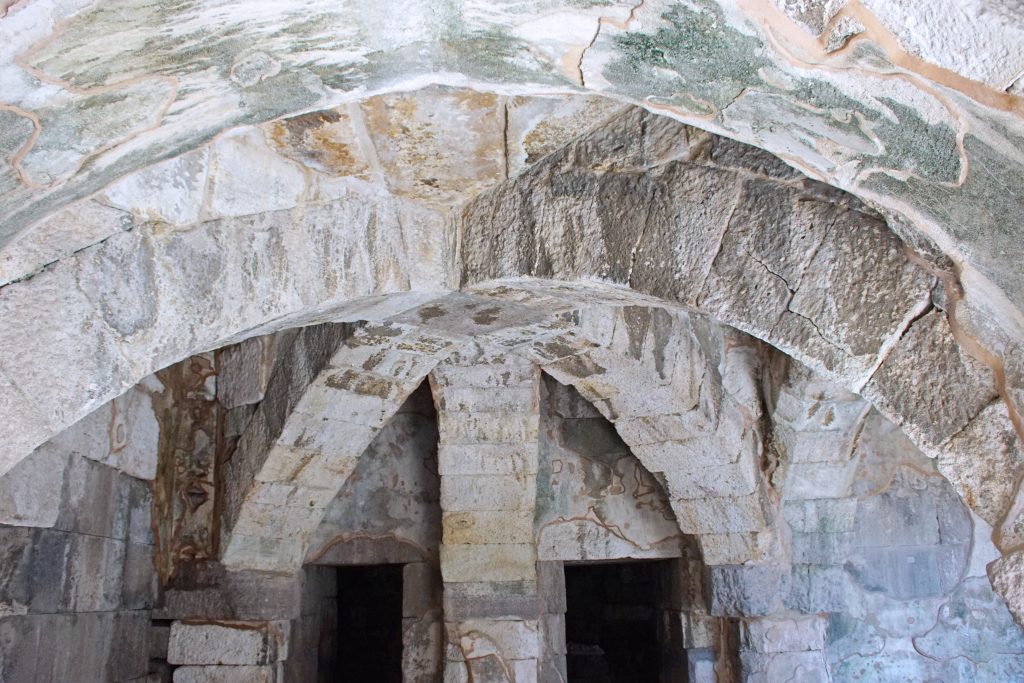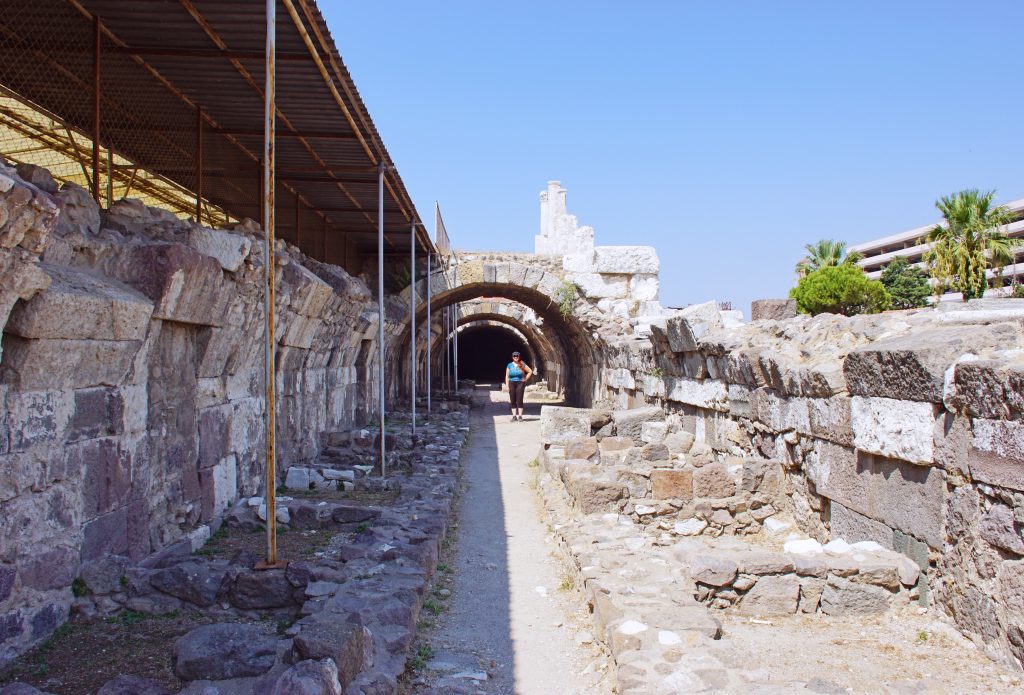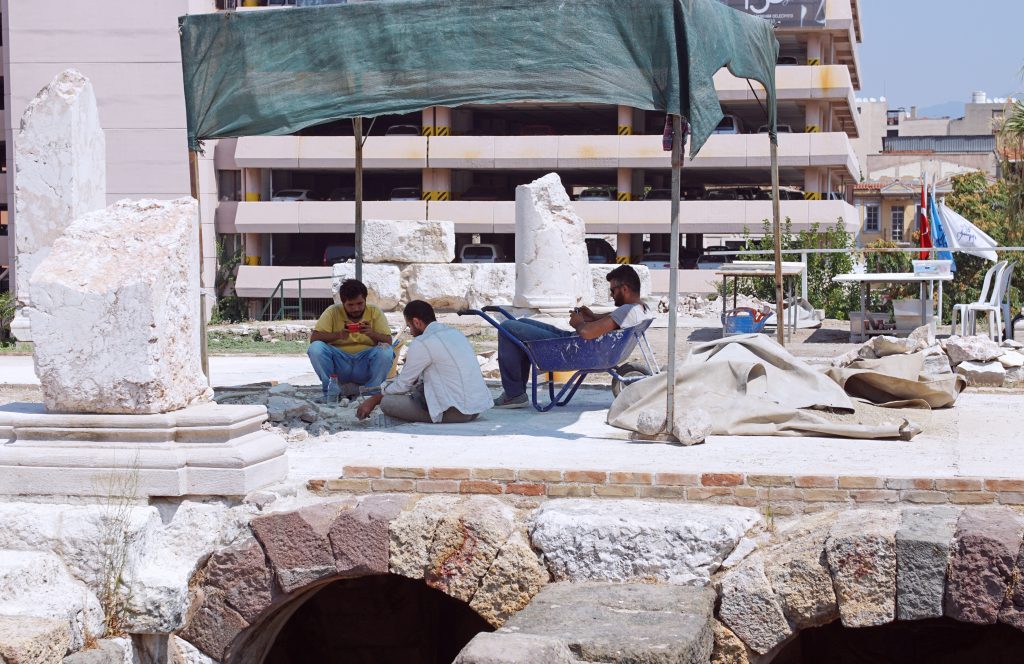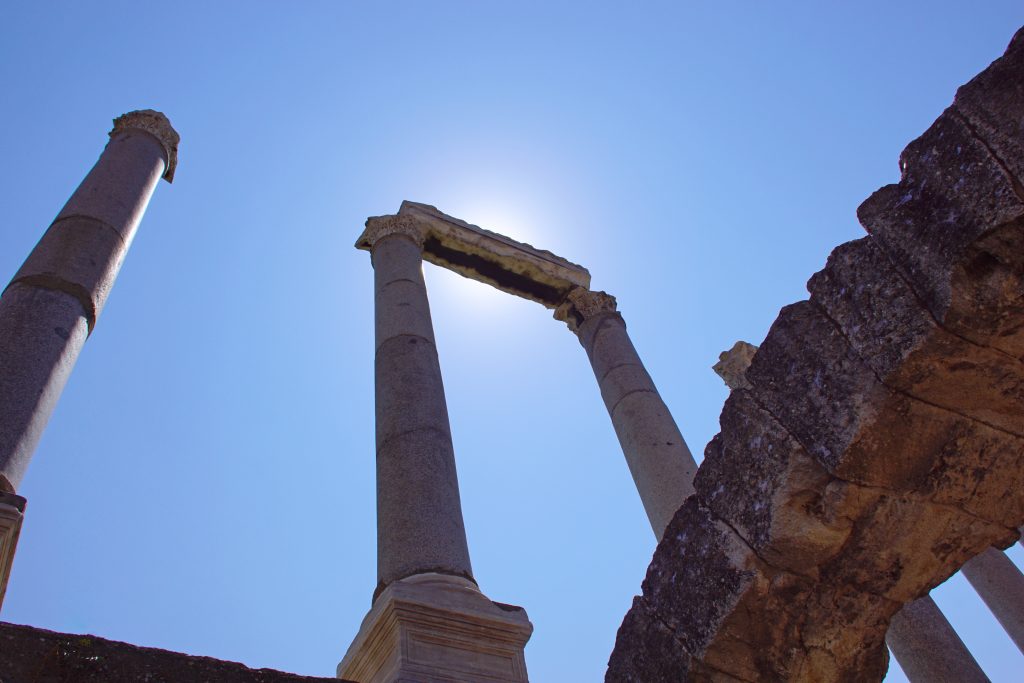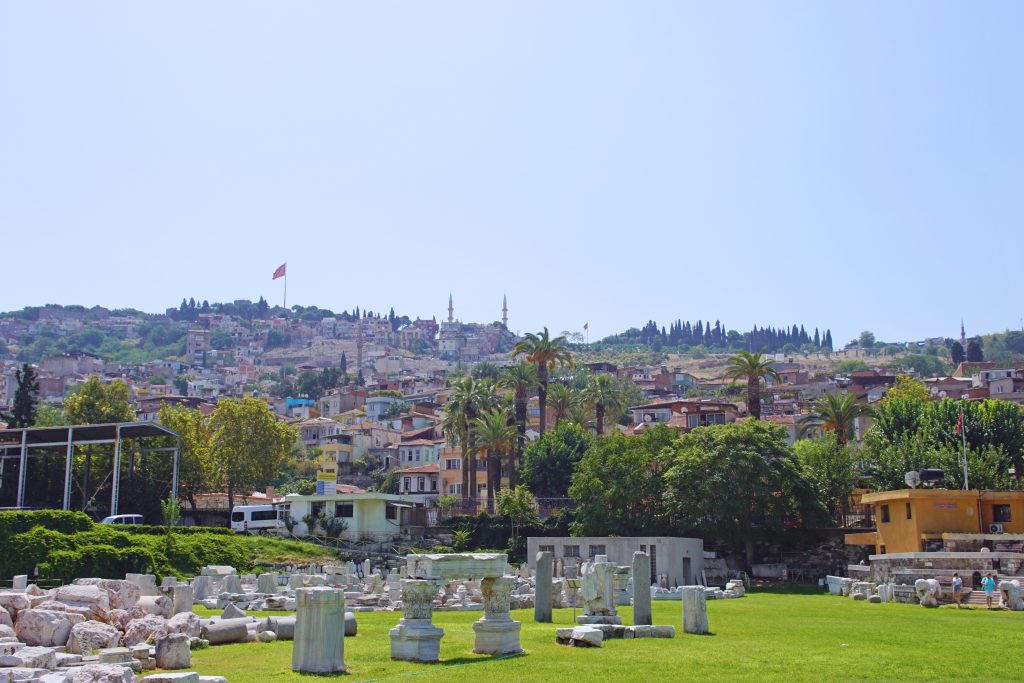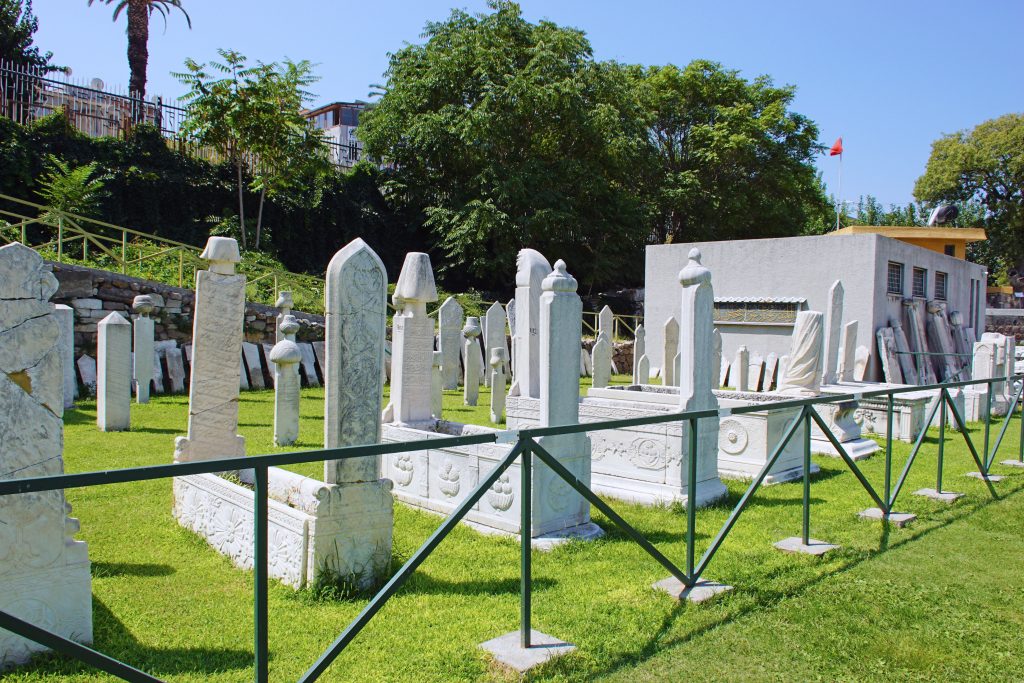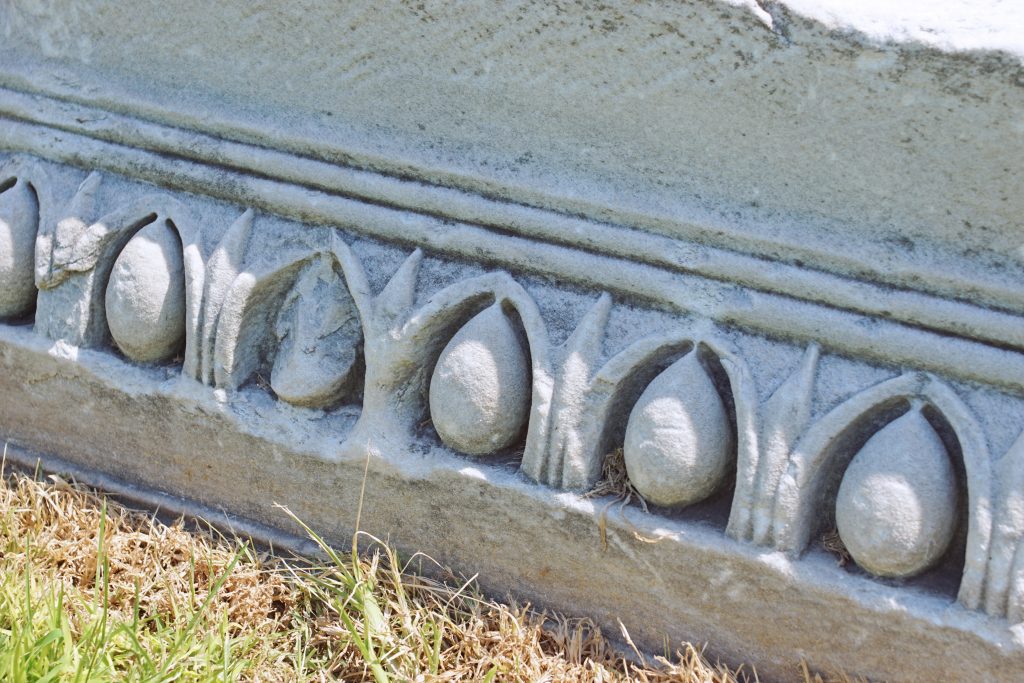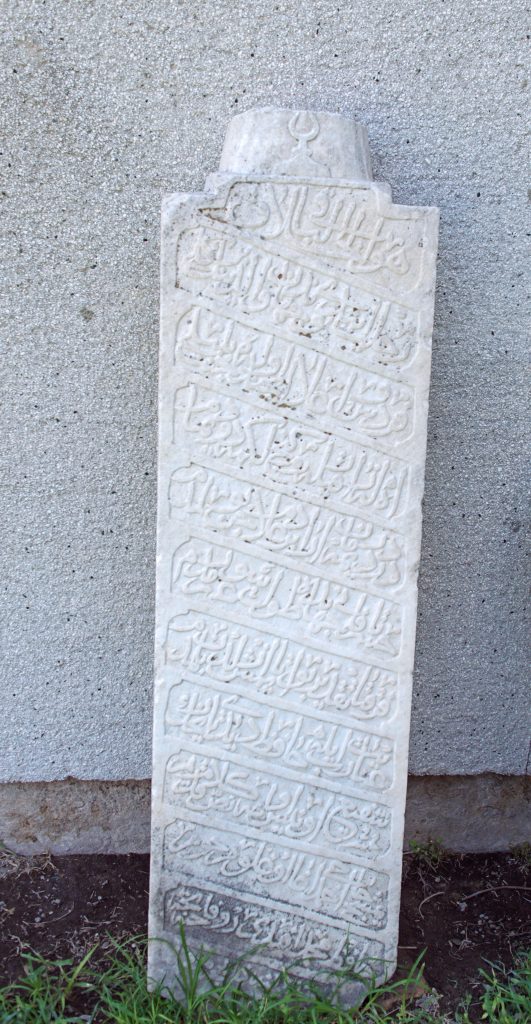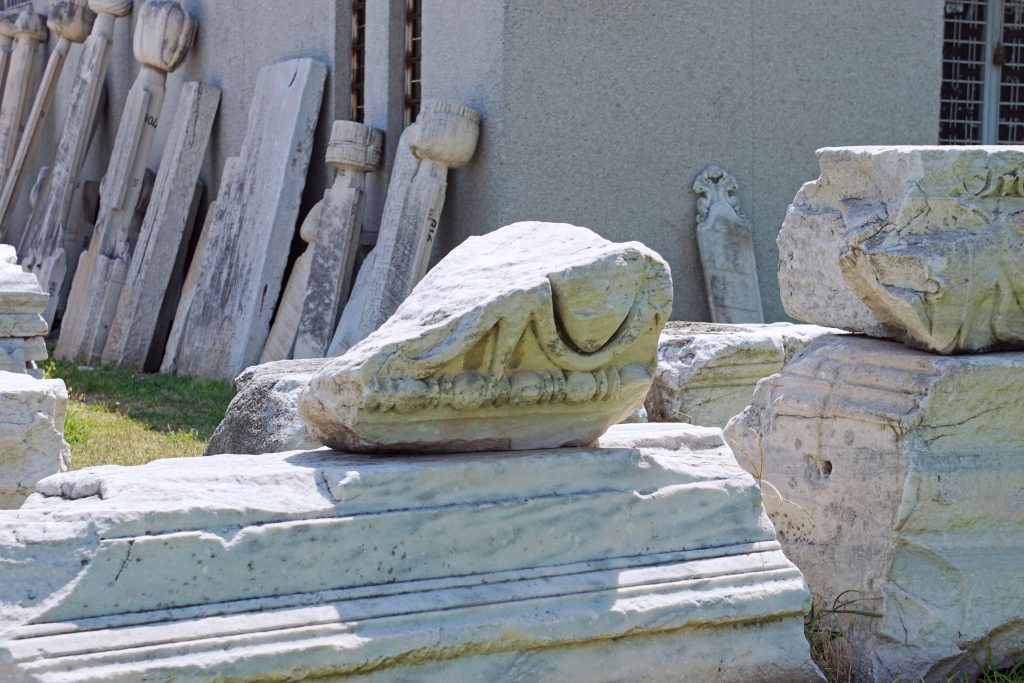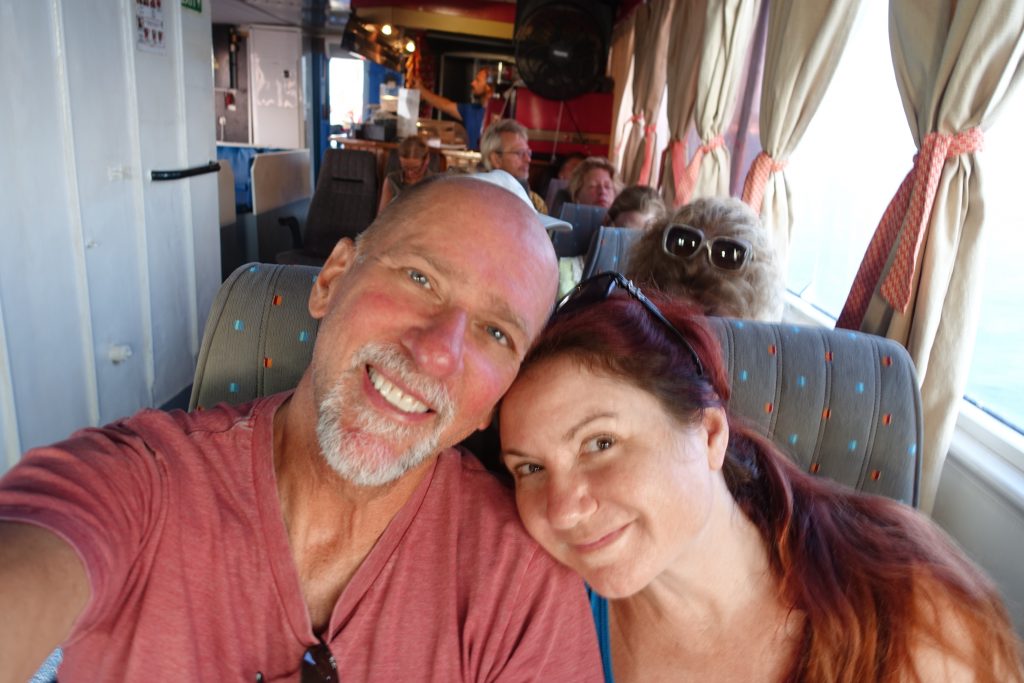İzmir is the third most populated city in Turkey, the second largest metropolitan area on the Aegean Sea (Athens is the first), and has a dot over the capital i in its name, pronounced as EE in meet or EA in seat. It is a short distance from where we are staying in Kuşadası, so we rent a car and here we are!
Note that driving in İzmir is not for the timid. When I enter a highway, turn on my blinker, and look for a spot to merge, I see only an unbroken line of cars streaming past. So I embrace the Turkish culture and just merge anyway. A car gives way, and I’m cruising down the highway with the other drivers. I comment to my wife, “It’s like driving in southern California, except no one honks at you.”
İzmir
We have only a few hours, so we park our car near the main bazaar and start walking, with no particular destination in mind.
The Clock Tower in Konak Square is easy to find. It is decorated in Ottoman architecture style, and has four fountains at its base. Each fountain has three basins, each with a spigot, and people wash themselves or their belongings.
In Konak Square is the Government House, which is not surprising. The name konak means, inter alia, government house or official residence in Turkish and refers in the case of Konak, İzmir, to the residence built for the governor between 1869 and 1972 at the spot and as a replacement of the mansion of Katipzade, a family of notables who controlled the city and the region between 1750 and 1820. The new building was intended to emphasize the prestige acquired by a growing international trade center and its design and furnishings were consequently luxurious. But you probably already knew that…
I take a photograph of a pretty girl, wondering why she is sitting on the open grating rather than the bench, and how she will explain the strange marks on her butt when she gets home. Yes, that’s where my mind goes. Sorry.
A little backstory: Remember the Clock Tower? That’s the greenish dot in the lower left of this image. We are parked in a parking lot near the green square on the right (which is the İzmir Agora—more on that soon). In between is a labyrinth of shops, covered bazaars, uncovered bazaars, mosques, and about anything else you can think of. The perfect place to get lost. And that’s where we are now.
Many of the shops are high-end outlets. In other areas, shopkeepers shout at us, first in English and then in German, hoping we visit their shops. “Hello, Hello… Where from?” We don’t respond. “Deutsch?” Although it seems rude, we ignore them. We have, occasionally, spoken to shopkeepers, and they are extremely polite and accommodating, but they really just want us to purchase goods from their shops.
We notice that most of the mannequins showing women’s clothing do not have heads. Occasionally we see them with heads, but only once does the head have hair. We don’t know if it’s a momentary marketing trend or a social custom.
We also notice that, as in California, the mannequins have impossible figures and the dresses are styled such that Grandma would approve. Some things are universal…
In 2017, according to the internet, İzmir was visited by 148,000 Germans, 40,000 Iranians, 30,000 from Holland, 21,000 from Belgium, 18,000 from France, and more. Only 35,000 came from the United Kingdom, and only 4,400 came from the USA. So why is this sign in English? Is “Erotic Shop” really universally understood? Or perhaps only folks from the UK and USA purchase erotic items in İzmir? ¯\_(ツ)_/¯
According to their sign, they sell sexual health products, underwear, DVDs, and VCDs. We will never know, because we do not enter the shop. 😐
In the map above, the top left corner shows the Konak Pier. It is a shopping mall, and to enter it we must pass through a security checkpoint. It is air-conditioned and, most importantly, has a public restroom. 😕
We find a restaurant and order a cup of House Coffee, Turkish-style. The yellow bit on the plate is sugar. In Turkey, you put the sugar between your teeth and slowly sip the coffee, letting the sugar sweeten the bitter coffee at your own pace. And coffee is always served with water, because you are supposed to refresh your mouth between sips in order to fully appreciate the taste.
Turkish coffee is like a jolt of happy.
In our wanderings, we come across the İzmir State Opera and Ballet. At least, we think it is. The building is much too small. Perhaps it is just the administrative building? Like many things in life, this will have to remain a mystery.
We find the Salepçioğlu Mosque with its free-standing slender minaret. (Note that the date of construction uses the Islamic religious calendar.) We are unfamiliar with local customs, so we do not attempt to enter.
This parking situation must make sense to someone, right?
Okay, the real reason we came to İzmir was to visit the Agora Open Air Museum. So we head in the general direction, but keep getting turned around. We eventually figure out that the sea is “down”, so we follow only the streets that go up (duh). We finally emerge about one kilometer south of the Agora; good enough!
Agora Open Air Museum
Smyrna was a Greek city dating back to antiquity located at a central and strategic point on the Aegean coast of Anatolia. Due to its advantageous port conditions, its ease of defense and its good inland connections, Smyrna rose to prominence. Two sites of the ancient city are today within the boundaries of İzmir. The first site, probably founded by indigenous peoples, rose to prominence during the Archaic Period as one of the principal ancient Greek settlements in western Anatolia. The second, whose foundation is associated with Alexander the Great, reached metropolitan proportions during the period of the Roman Empire. Most of the present-day remains of the ancient city date from the Roman era, the majority from after a 2nd-century AD earthquake.
The core of the late Hellenistic and early Roman Smyrna is preserved in the large area of the Agora Open Air Museum.
Note to history buffs: the city of İzmir was called Smyrna until 1930, when it was changed under the Turkish Postal Service Law. Now, only the ancient historical sites are referred to as Smyrna.
The Agora Open Air Museum is a multistory structure built on arches and pillars around a large courtyard with marble flooring. The word Agora means “marketplace” and is a state-owned area where political meetings and public courts are held. (So, technically, shouldn’t “agoraphobia” be a fear of shopping?)
We pay a nominal fee and enter the Agora. There is no one else here but us. 😀 We pose under the arch with an embossed portrait of Faustina, the wife of Emperor Marcus Aurelius; we don’t think her head is life-sized.
Although this is the West Gate, it is not the entrance to the Agora.
A handful of pillars remain standing. We walk past them to the entrance of the ruins at the far end of the field, 160 meters distant. The flags in the distance seem to be celebrating the foundation of the Turkish Republic.
There is a sign telling us not to walk on the arches, otherwise we would have. 🙄 To our eyes, this seems very over-engineered. Did they attempt to build with fewer arches, only to have it collapse? Were there master architects from great schools who drew designs on long scrolls? Was it just common knowledge that arches needed to be “this” far apart to support a second story?
These spaces were mostly long tunnels, but there are (apparently) many door-sized and window-sized openings. It seems like there would also have to be openings in the top to allow warm air from lamps and stoves to exit, and for light to enter.
The Agora was fed by water pipes and the water flowed in these channels. There is no indication to tell us if the water was used for drinking or for other purposes. According to the internet: The large cisterns and varying sewage parts inside the Agora show that it is in an area of ample water supply. It is thought that the spring in the entrance of the Basilica has been flowing since the first age.
There are a number of places where two rows of arches intersect at a right angle. Notice, too, the mineral deposits on the rock in the foreground where centuries of mineral-laden moisture evaporated.
Here we have an example of the restoration efforts. Notice the thickness of the arches in the distance. There are few signs to describe the history of the Agora, so we can only assume that certain arches supported far more weight than did others.
Although it is not very hot, workers rest on concrete and in a wheelbarrow in a shaded area rather than in chairs and in the sun. Actually, that wheelbarrow does look comfy…
The ancient arches and columns provide an opportunity to capture an unusual perspective.
Most of the pieces extracted from the Agora are now in the İzmir Archeology Museum and the History and Arts Museum. In the distance is a mosque with two minarets that might be Hava Şehitleri Kadifekale Cami, but the internet is surprisingly sparse with information about it.
Since the Agora ruins were used as a cemetery in the Namazgah district long ago, it is home to many artisan-crafted gravestones. Although the graves were transported to a different location, the Ottoman gravestones may still be viewed at the site.
Some of the detail of the graves is amazing. It’s easy enough just to carve an image, but to carve seemingly-hanging spheres is more skill than I have.
Much of the writing we’ve seen is Greek or Roman, but there are a few examples of Arabic writing at the Agora. Although beautiful, it seems that it would be much easier to carve the more angular Greek and Roman letters than Arabic script.
Erased from our literature, there are still a few places where the existence of Lizard People is still acknowledged.
We love the sights, sounds, smells of Turkey. It is an amazing place to visit, everyone is friendly and welcoming. But, our trip to Turkey draws to a close. We board the ferry and head back to Samos.

